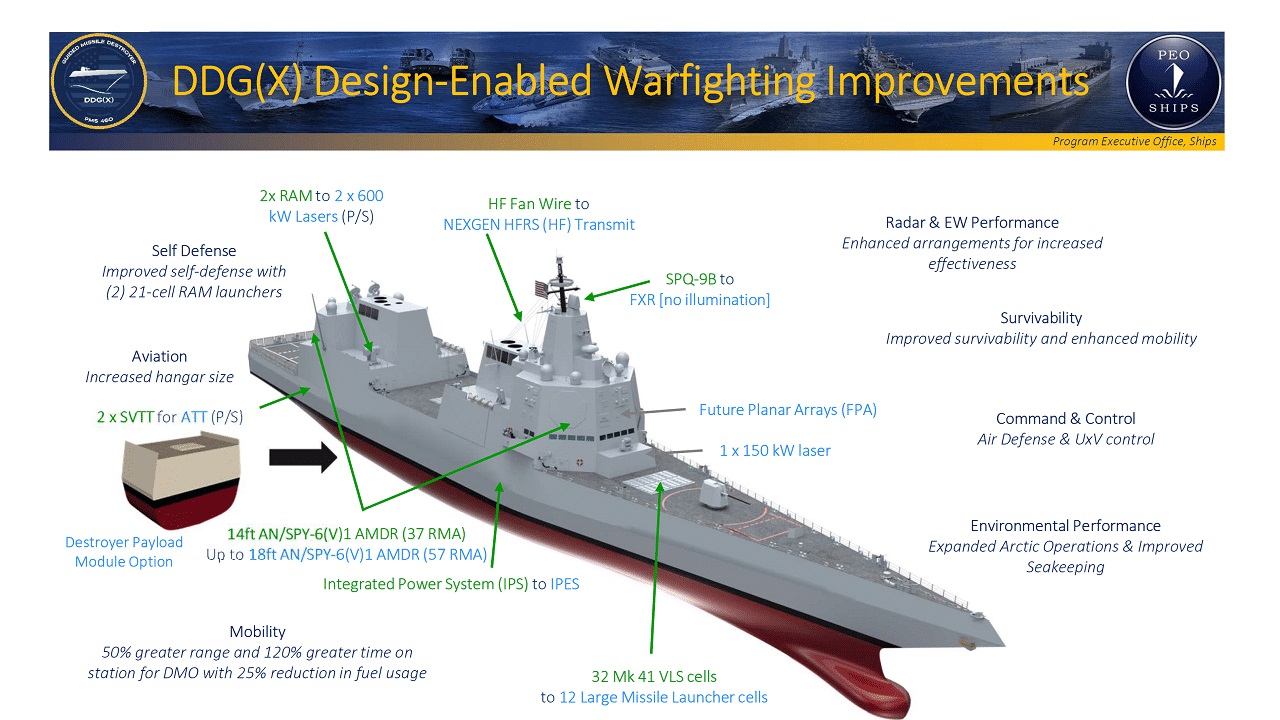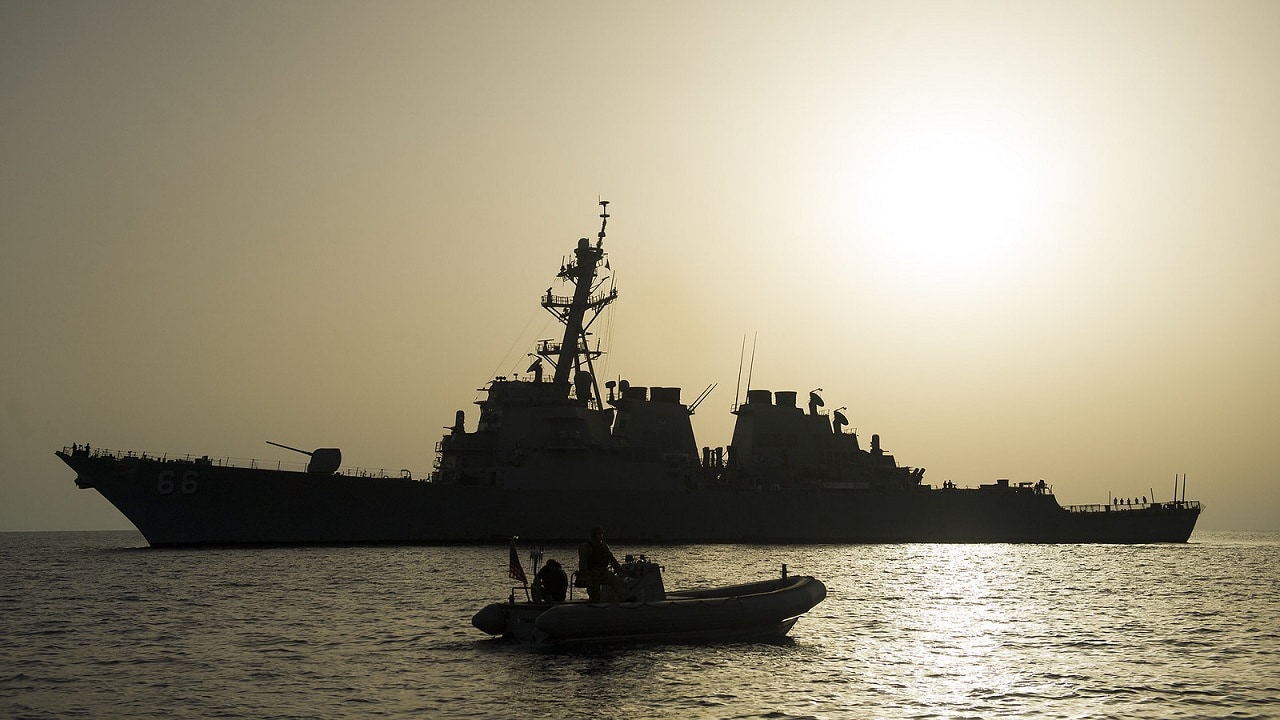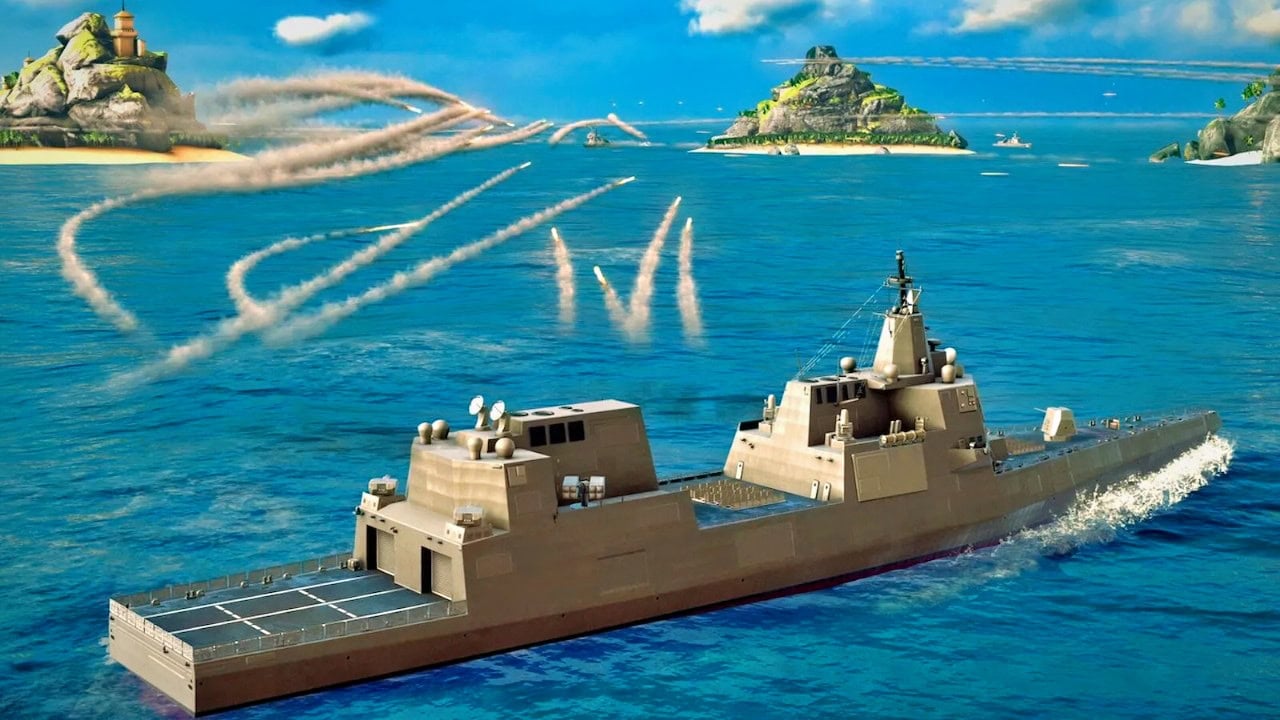Key Points and Summary: The US Navy’s DDG(X) next-generation destroyer program, intended to replace aging warships, is grappling with significant challenges.
-Costs are ballooning, key technologies like directed energy weapons are not yet mature, and the power demands of future systems are immense.
The Navy needs to find a solution for generating sufficient electricity to power advanced radars, weapons, and other onboard systems.
-While the Navy plans to extend the service life of some older destroyers, the pressure is on to finalize the DDG(X) design and overcome these hurdles to ensure the future readiness of the fleet.
US Navy’s DDG(X) Destroyer Program – Overpriced Replacement
The U.S. Navy’s DDG(X) next-generation destroyer program is scheduled to replace previous generation Ticonderoga-class (CG-47) cruisers and Arleigh Burke (DDG-51) destroyers – both of which are reaching the of their useful service life – by the 2030s.
It is also facing the usual criticisms that confront almost any new weapon systems:
-It is overpriced and becoming more unaffordable all the time.
-The technologies in the design that are necessary for the ship to perform its mission are not yet mature.
-The force in question (in this instance the US Navy) has more pressing priorities that need to be addressed.
Facing the cost issue is difficult as the estimates for the price per ship vary from once source to another by almost $1 billion.
The price to be paid in the meantime is another issue. If the DDG(X) is delayed or even canceled, the USN will have to spend a hefty sum to keep older ships in service longer than originally planned.
In October 2024, the then-Secretary of the Navy, Carlos Del Toro, announced plans to extend the service lives of 12 Arleigh Burke-class destroyers and continue operating them from 2028 to 2035.
“Extending these highly-capable, well-maintained destroyers will further bolster our numbers as new construction warships join the fleet,” Del Toro said in an official statement. “It also speaks to their enduring role in projecting power globally, and most recently in the Red Sea, their proven ability to defend themselves, as well as our allies, partners and friends from missile and drone attacks.”
DDG(X): Racing the Clock
Technologies and their maturity are another headache.
The US Navy is in the unfortunate position that the new ships are still in the process of design concept development.
At the same time. the Arleigh Burke class ships are constantly described as being “maxed out” in terms of any future growth potential. Having those technologies not so far out in the “leading edge” category is desired but many say the time needed does not exist.
One of the stumbling blocks confronting the US Navy in incorporating new technologies into the building of new vessels, said a long-time shipbuilding contractor who spoke to 19FortyFive, is the power consumption dilemma.

DDG(X). Image Credit: U.S. Navy.
“So much of what is required to keep a modern surface combatant ship operating requires far more power – electricity requirements – than it ever did in the past. Too many formerly hydromechanical systems that could be manually-operated are now computer-controlled,” he explained.
This is a critical factor in life of any future naval vessel. The electrical power demand for the advanced radar and electrically-powered weapons alone that are the main features of the DDG(X) ships is projected to increase by 50 percent or more in the coming decade.
For decades naval vessel designers have separated engine power distribution arrangements: one set generates the power for the propulsion system. The other provides electricity for what is called the “hotel load.” This includes most of the other systems on the warship from lighting to the weapons and sensors. In the present day there is barely enough power for these hotel loads, and they will be completely insufficient in the future.
Add in the requirements for such high-voltage future items as directed energy weapons (DEW) and the phrase “overloaded power grid” takes on entirely new meaning.
Impossible Requirements Set for DDG(X)?
US Navy reports to Congress specify “future large surface combatants (LSCs) to be capable of hosting directed energy (DE) weapons, larger missiles for increased range and speed, increased magazine depth, growth in organic sensors, and an efficient integrated power system to manage the dynamic loads.”
Interviewed in the summer of 2023, Bryan McGrath, managing director of the FerryBridge Group consultancy, pointed out the mismatch in how new requirements and the technology that addresses has historically driven ship design.
The most prominent example of this is how DEWs are a technology the Navy would like to integrate into DDG(X), but the lack of a practical design for them is a significant action item holding the program back.

GULF OF ADEN (May 17, 2016) Members of the visit, board, search and seizure (VBSS) team operate a rigid-hull inflatable boat (RHIB) alongside guided-missile destroyer USS Gonzalez (DDG 66). Gonzalez is currently operating with the Boxer Amphibious Ready Group in support of maritime security operations and theater security cooperation efforts in the U.S. 5th Fleet area of operations.
Every time the Navy has previously changed the size and shape of its destroyers, “it was in response to technology that existed,” he explained.
“The problem that the Navy has right now is that it doesn’t have that 600-kilowatt to 1-megawatt maritime laser out on a ship or a barge, showing the world that we have it, and we can do it. If that laser existed, a lot more people would be willing to say, ‘Let’s make the jump’” to DDG(X).
Coming up with a solution for this impasse is the key to this program’s success or failure, as science fiction-like as it appears.
For the program to succeed, this class of weapon and the required power generation capacity need to be “ready for prime time.” The clock runs on how the Navy can address both as soon as possible.
About the Author: Reuben F. Johnson
Reuben F. Johnson is a survivor of the February 2022 Russian invasion of Ukraine and is now an Expert on Foreign Military Affairs with the Fundacja im. Kazimierza Pułaskiego in Warsaw. He has been a consultant to the Pentagon, several NATO governments and the Australian government in the fields of defense technology and weapon systems design. Over the past 30 years he has resided in and reported from Russia, Ukraine, Poland, Brazil, the People’s Republic of China and Australia.

